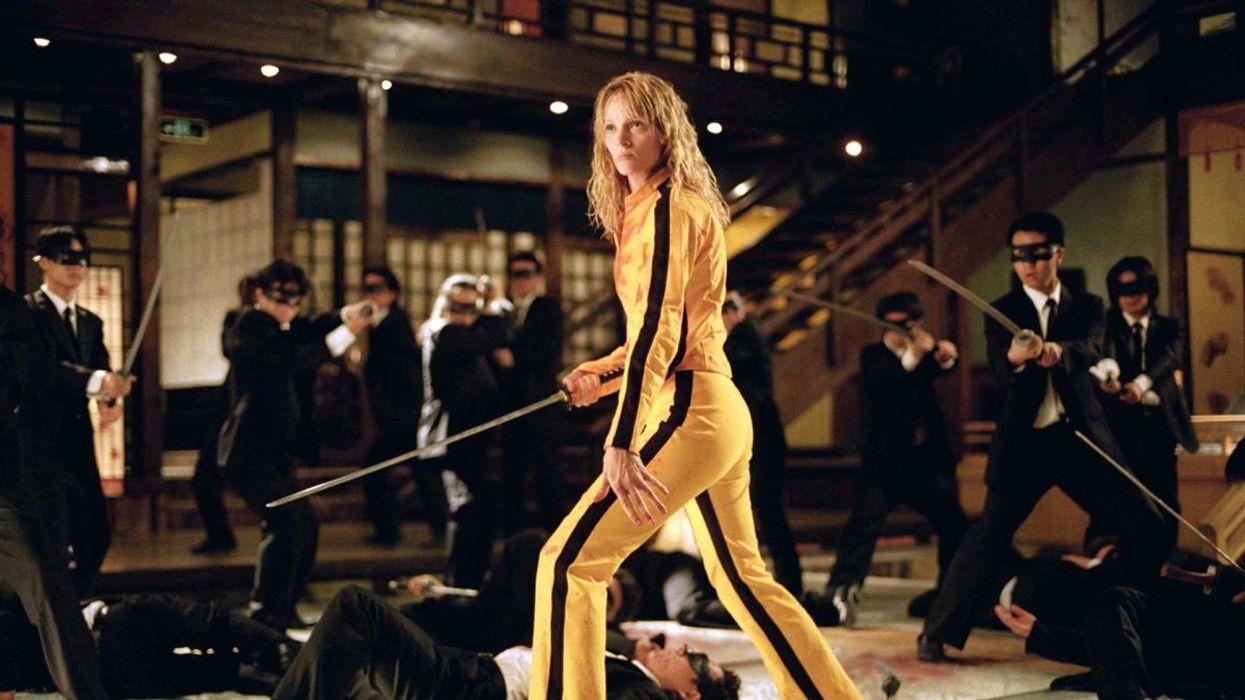Where Does Homage End and Originality Begin Inside 'Kill Bill'?
Quentin Tarantino is the master of pastiche, but what makes him an original voice, as well?

I've said it on here many times, but I think both Kill Bill movies represent the pinnacle of Tarantino's talents as a writer and a director. While I love different things about all of his films, I feel like these movies are the most fully realized execution of his natural talent. That's because they do the best at combining Taratino's love for homage with his original writing and directing techniques. But where does the homage stop and the originality begin?
Check out this video from CineFix and let's talk after the jump.
Where Does Homage End and Originality Begin Inside Kill Bill?
It's no secret that Quentin Tarantino loves an homage. I mean, his company, A Band Apart, took their logo from a famous French movie. One he mimicked in Reservoir Dogs.
Well, within Kill Bill you have Tarantino taking from Westerns, samurai films, anime, kung-fu movies, and a little bit of everything else. You also have him struggling with paternity, family, loss, and plenty of original motifs as well.
As the above video showed, the Crazy 88’s fight in Kill Bill: Vol. 1 is both one of the greatest fight scenes of all time and the perfect encapsulation of everything Tarantino is doing within the movie. It's the perfect blend of auteur artistry and storytelling.
Tarantino made an action scene that simultaneously feels familiar and original at the same time. Even for someone who has never seen all the movies he referenced, Tarantino understands that these images worked in the past, and will work now. But his original voice spouts by giving them new context just for people who have seen his film.
Shots like the double exposure eye close-up in Death Rides a Horse or the eye gouge in the 1972 martial arts film Five Fingers of Death are specific examples of how Tarantino uses references to amplify his intentions inside this Kill Bill fight scene.
So where does originality come into play?
Tarantino of course wrote an original story for Kill Bill that enables all these homages to be used, but still highlights a personal and interesting story of a mother's bond with her child. And she hopes to keep that child away from her evil father. Does that sound a little like Tarantino's own youth? Kind of.
Aside from all that, Tarantino's originality comes from his improvisation. When the MPAA told him he would get an NC-17, he switched the fight up and rolled it into black and white, thus changing the perception from violence to art. He also is great at subverting the way these homages come across by playing pop songs, shifting tones, and ultimately having way more fun than any of the original movies he's playing with.
Think of Tarantino like a pop artist doing a collage of real life. As the video says, he's "taking previous works to recontort and leverage the ability to communicate a narrative to amplify a specific element of his film."
That's generally what I love about Tarantino. His collages are always taking what is familiar and using it in new and exciting ways to create some art that would not exist without the other films before it, but that gives new meaning to him and to his directorial eye.
Let us know what you think in the comments.
Source: CineFix

 Richard Gere and Uma Thurman in 'Oh, Canada' via Kino Lorber
Richard Gere and Uma Thurman in 'Oh, Canada' via Kino Lorber  Uma Thurman in 'Oh, Canada'via Kino Lorber
Uma Thurman in 'Oh, Canada'via Kino Lorber 









